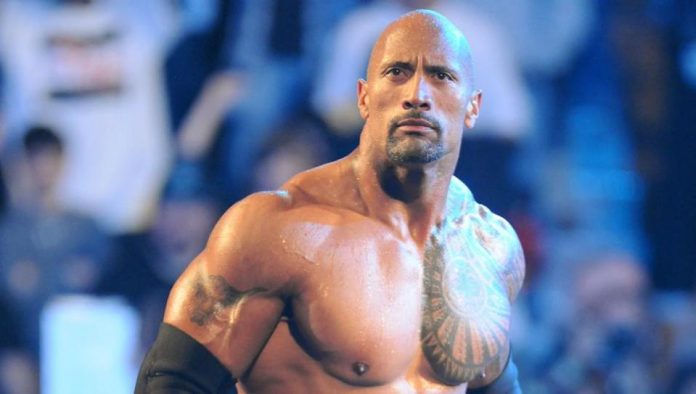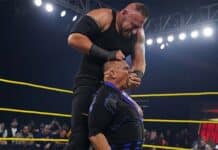
Wrestlemania 28 saw nearly 80,000 fans in attendence for the “once in a lifetime” John Cena vs. The Rock bout, a match that was a year in the making after The Rock cost Cena the WWE championship the previous year. In the time since this event, it was often debated if a part-timer should show up for a main event spot, but what people didn’t know in 2012 is that part-time main eventers would more or less be the formula for the WWE in the next several years. Granted, there are positives and negatives to that situation, but the overall opportunity costs and in the process where it led the WWE landscape is a very intriguing discussion. More on that later.
The show opened with the 20-second World Heavyweight championship match between Daniel Bryan and the winner of that year’s Royal Rumble, Sheamus. There are a few takeaways from even a contest this brief. Most importantly, even as a heel, Daniel Bryan was really over with the audience, as there were “Yes!” signs in the crowd and an occasional Daniel Bryan chant surfaced during the rest of the show. This was yet another example of how secondary Smackdown was presented in the past, especially during the Friday night era. Keep in mind, the blue brand was on the Sci-fi channel, a network without the same type of availability as other cable channels, at one point before it moved to Tuesdays on USA. In this era, without Edge and The Undertaker as staples of the show, it almost seems like management just wanted to keep the brand afloat until it could be a better distribution deal, which it did under the Universal umbrella when the show was moved to USA to compliment Raw, which is really the only time it was booked as if it was a priority for the company. Anyway, Bryan was the champion, but even that run, given the status of Smackdown at the time, wasn’t really an opportunity for him to get a chance to be as big of a star as he could’ve been within that time frame. The “B-show” champion was as far as WWE brass was willing to invest in him. As we know, Daniel Bryan is one of the best of all-time and despite management’s best efforts, he still got over as one of the most popular stars of his generation, an aspect that will be covered later in this series. As mentioned, Sheamus won the title, but again, the lack of importance of the Smackdown brand didn’t really push him to the next level in terms of star power, and the fact that he was repackaged a few years later speaks volumes to lack of the ability to make new money-drawing stars in the company.
Kane, complete with a welder’s helmet, beat Randy Orton in a decent match, but nothing too spectacular. If I had to guess, I’d say this is another example of Orton mailing it in based on his position on the card because this contest never really got to the next gear. It’s puzzling because as I mentioned in the article about his match with Triple H at WM 25 a few days ago, it seems like Orton decides when he wants to coast in the ring because he shows flashes of brilliance under the right circumstances, but the majority of his matches are mostly average. Don’t get me wrong, he’s a talented guy, but considering his talent level, it seems like there should be better quality matches and that often wasn’t the case for the majority of his career.
The Big Show defeated Cody Rhodes in a short, but good match to win the IC title. This was after an extended IC championship reign for Cody, and if the office wanted to move him up the card, this would’ve been the time to do it. It’s still very perplexing as to how WWE management overlooked or just completely underestimated his ability for years. Obviously, his work in Ring of Honor and All Elite Wrestling proved that he’s a top level talent. If I had to guess, I’d say the reason Cody never got the chance to truly breakthrough in the WWE system is the same reason many talented athletes that should’ve had a better spot in the past several years didn’t get the opportunity to breakthrough the system, it wasn’t on the corporate agenda. WWE brass decided who they wanted in those top spots, specifically to represent the publicly traded company outside of WWE TV and if an athlete isn’t in those plans then there’s only a certain level they will get to within the WWE structure. Somehow, the office only saw Cody as a Goldust clone or a solid mid-carder, and regardless of how skilled he was in the ring or on the mic, management already cast him in the role.
The tag match of Kelly Kelly and Maria Menounos vs. Beth Phoenix and Eve Torres wasn’t anything great and probably should’ve been shorter, but since Menounos is an actual fan of the sport, this gets a pass. While Menounos has a name from the entertainment world, I’m not sure it was a wise decision to book her in a match with zero wrestling experience, especially because Kelly Kelly wasn’t exactly known as a great in-ring wrestler either.
The rematch of The Undertaker vs. Triple H was another great bout, even if it got a little too outlandish and probably went too long. As mentioned yesterday, the key to any match involving the streak as the focal point is the ability to create a believable false finish where it appears the streak is legitimately in jeopardy. There were two particular points where these athletes accomplished that, with the super kick into the pedigree and then another pedigree spot later in the match. The problem with that is, sequences like that eventually set a precedent where the overuse of finishers became common place instead of trying to build drama with back and fourth action. It should also be noted that technically, this was really lazy booking because the company tried to pretend that their original bout at WM 17 didn’t happen and at a time when The Undertaker began wrestling once a year and only has a limited amount of matches realistically left in his career, did they have to be a third match with Triple H? Furthermore, would we’ve seen Triple H against The Undertaker two years in a row if Shawn Michaels didn’t steal the show with him the two years prior to that? The HIAC stipulation was added to give it some variety, but most of the signature spots were similar to the match the previous year.
The 12-man tag match was decent for what it was, but there’s not exactly an extensive list of stellar 12-man tag matches so there’s not a lot to say about the specific action. However, it should be noted that WWE management booked the finish to basically stomp out Zack Ryder because he was made to look like a fool after Eve turned heel and cost him the match. Ryder got over on his own and it wasn’t in the office’s plans so he was made to look like a joke at Wrestlemania. It’s ironic because when Vince McMahon was on the Stone Cold podcast, he mentioned that more competitors should “reach for the brass ring” but when Ryder didn’t follow the plan to be content as a lower mid-card guy, his progress was squashed.
The Chris Jericho/CM Punk WWE title match was solid and it told a good narrative throughout the contest, but at some point there was more sizzle than substance and it halted some of the momentum of the action. Ironically, I think the match they had the following month at Extreme Rules was actually the better bout because there was more of a focus on the in-ring action.
The Rock vs.John Cena was promoted as “once in a lifetime” but as we know, it happened again a year later. The match was very entertaining, but it didn’t live up to the year-long hype. To be fair, there are very few matches that would live up to that standard, but WWE management went all-in to get The Rock back in the ring, and from a business prospective, it was a very successful decision because WM 28 set a pay-per-view buy rate record with 1.2 million buys, which is an increase of nearly 20% of the usual WM buy rate. However, there are a few downsides, even with the jump in buy rates. Basically, management needed The Rock to boost the show for them so they more or less didn’t have the faith in their full-time roster to be able to move numbers, a trend that continues today. Along with that, WWE brass took two WM main events that could’ve been used to get a full-time wrestler to the next level, but they took the short end money to put The Rock in that spot instead of trying to make a new star that could draw them money for the next decade. When the main event is already decided and advertised a year in advance, it essentially limits how over another competitor can get within that time frame because the main event is already for the biggest show of the year for the company.
What do you think? Comment below with your thoughts, opinions, feedback and anything else that was raised.
Until next week
-Jim LaMotta
E mail [email protected] | You can follow me on Twitter @jimlamotta







